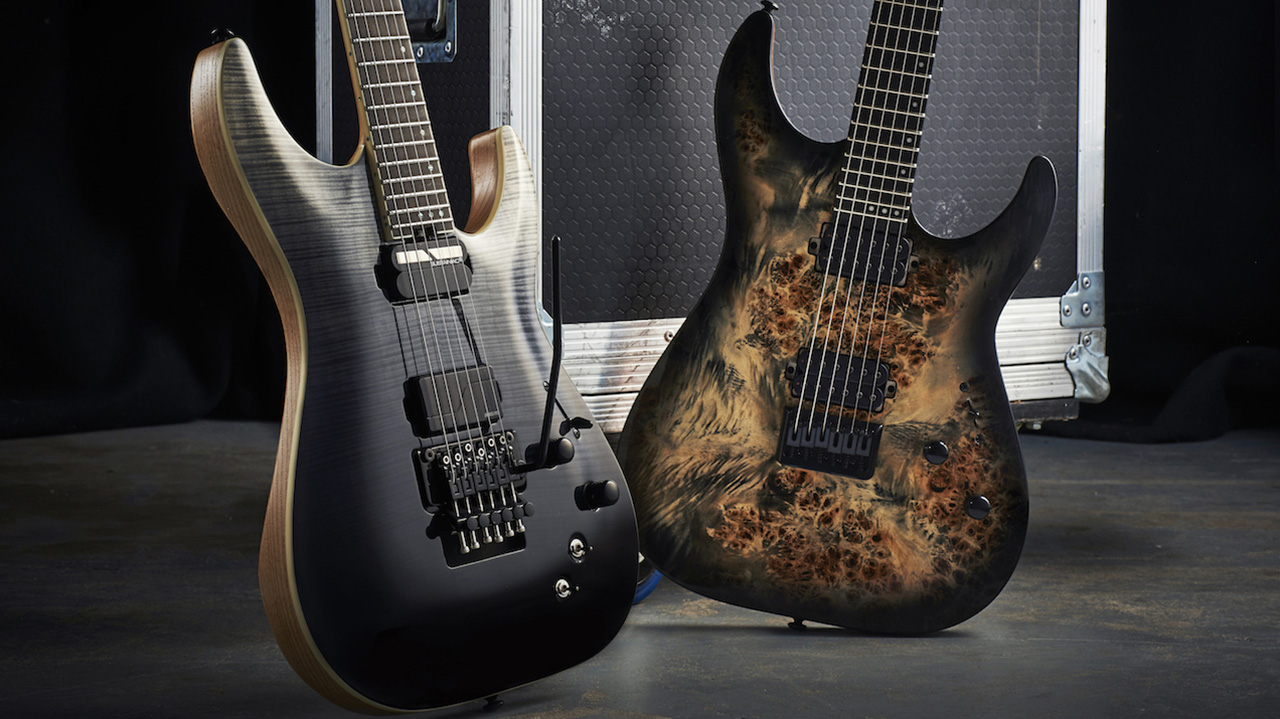When you invest in one of the best metal guitars, you’ll need something that can channel the raging riffs you hold inside and translate them into an unholy roar that will send shivers down your listeners’ spines. You’re playing heavy metal – so you need to make sure that you find your perfect weapon of choice.
And that is exactly what we’ve set out to achieve with this round-up. We’ve drawn the curtains, donned our favourite indecipherable band logo t-shirt and tracked down the best guitars for metal available today, whether your tastes lean towards the NWOBHM, death metal, prog metal or beyond. So, get those horns up and let’s dive in.
The guitars in this guide are listed in price order to help you pick out the best metal guitar for your budget. If you want to read some more in-depth buying advice, click the buying advice button above. If you want to get straight to the products, keep scrolling.
The best metal guitars: The Louder Choice
If you feel like the 1980s was the golden era for metal, then the iconic Gibson ‘70s Flying V that has been recently reissued is the one for you. This V will get you close to the coveted weapons wielded by the likes of Judas Priest, Metallica and Michael Schenker, with ultimate metal cred.
For the modern metal connoisseur, the might be more your thing. Designed to be played as a low-tuned baritone, it’ll get you into seriously heavy territory without having to retrain your fingers for a seven-string. You’ll have nearly all the extra access that a 7 or 8-string will get you, but you won’t need to battle with cricket-bat style necks.
Best metal guitars: Product guide
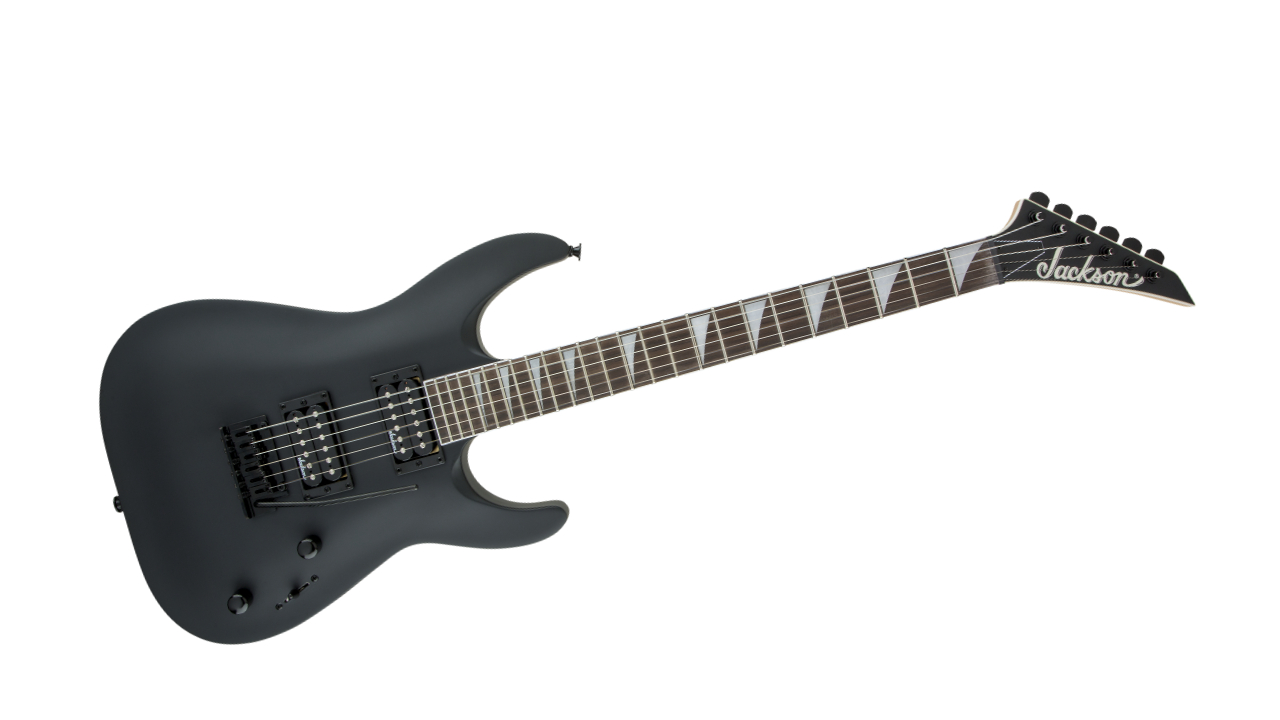
If you’re a beginner guitarist or just new to the world of metal, this JS22 should be right at the top of your list. Jackson is a huge name and has been responsible for some of the most iconic metal guitars, so you know you’ll be in good hands.
The ‘Dinky’ body shape is super comfortable, with deep cutaways allowing you to reach those upper frets with ease, and paired with an incredibly fast, slim neck you’ll be tearing around in no time. The 12”-16” compound fretboard radius is a common feature on most metal axes, and it’s a great middle-ground between a more rounded, chord friendly feel and a wide, flat shredders paradise.
Yeah, it’s a little bit plain looking - but who cares when it plays and sounds so good? You always know you’ll get brilliant value from Jackson, and this JS22 is phenomenal.
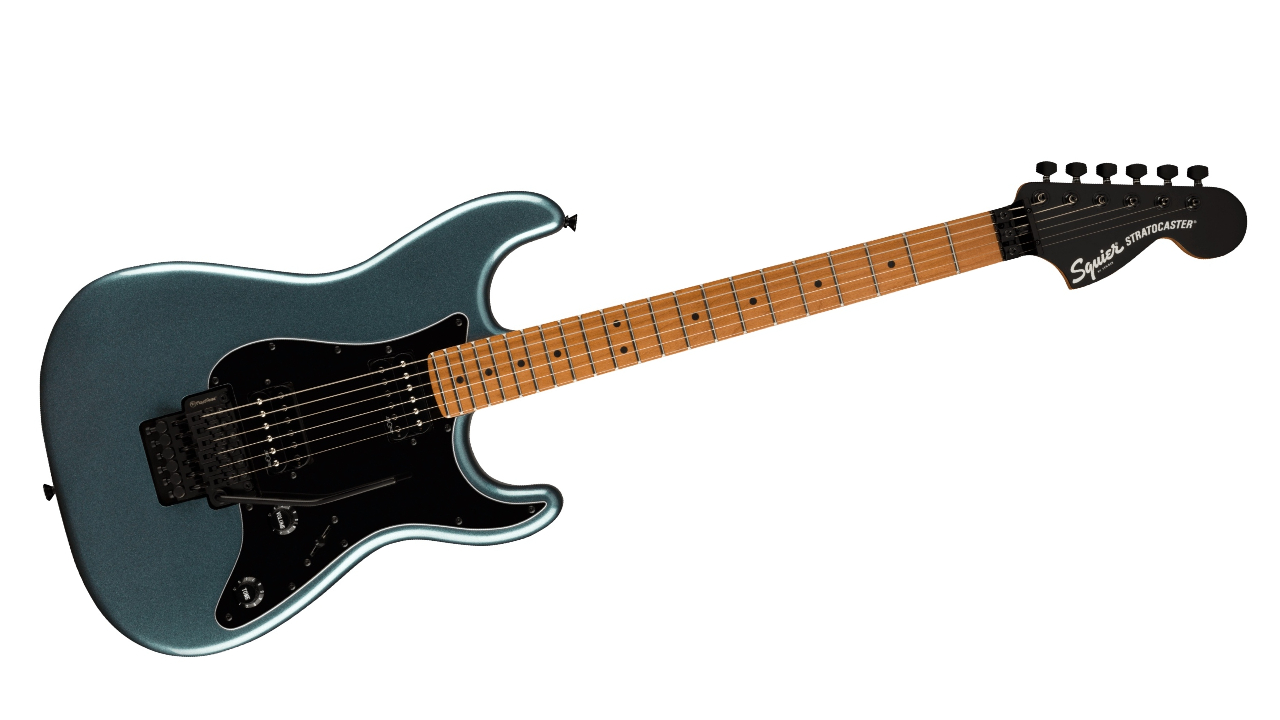
Good old Squier, coming out with another new product range for us to blow all our cash on. The Contemporary series is all about crafting instruments for the modern guitarist, and they’ve done an exemplary job with this humbucker-equipped Stratocaster.
Squier’s SQR Atomic humbuckers are one of the main stars of the show here. They’re passive, but incredibly powerful and dynamic, delivering anything from sparkly Strat-like cleans to complete and utter filth. Squier has included coil-tapping and series/parallel capabilities in the Contemporary Stratocaster, making this a versatile beast.
The smooth, satin-finished “C”-profile neck is fast, smooth and very playable, but still retains the classic feel of a Strat. Coupled with a gorgeous roasted maple fretboard, you’ll hardly ever put this one down.
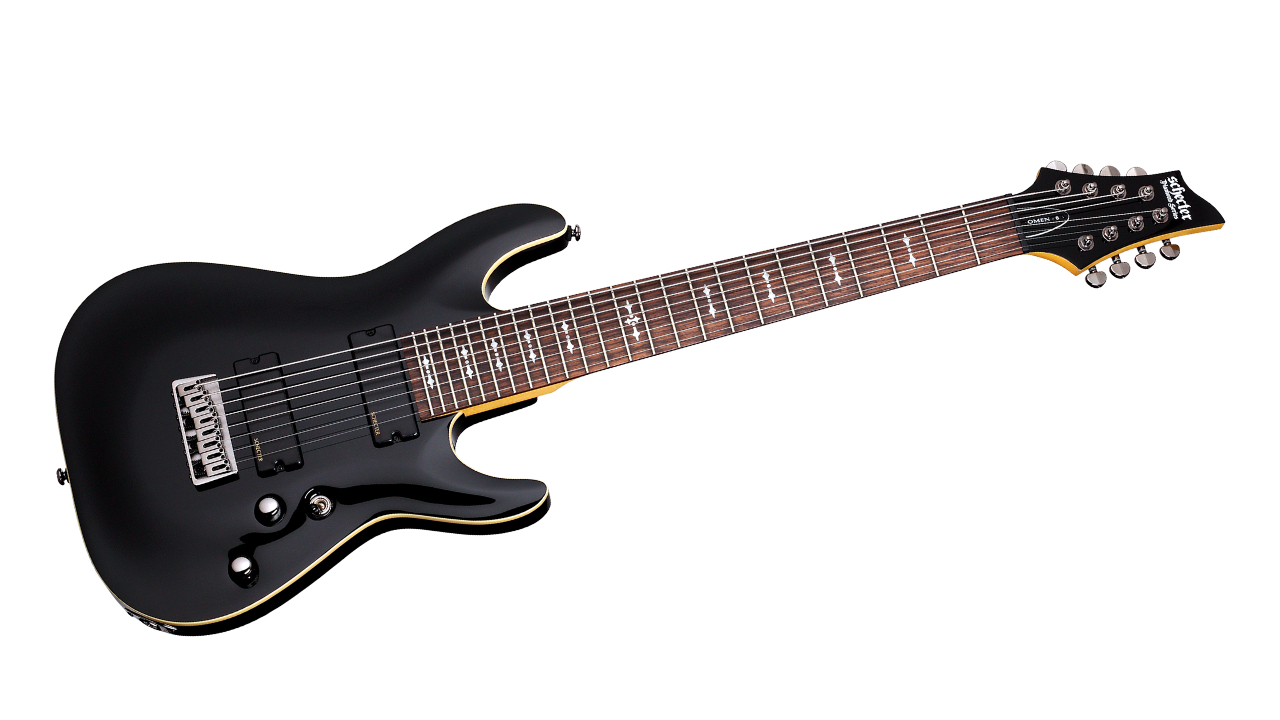
What’s this? An 8-string for under £/$500? Schecter has done it again! Having really taken a shine to the extended-range market, this offering is solid, easy to play, and great value for money. Granted, it’s not quite as sophisticated as some of their more high-end options, but at this super-affordable price point, what are you expecting?
The body carve and neck profile are catering for the masses here, but that doesn’t mean that Schecter has just chucked this guitar together. The Omen-8 is a welcoming instrument, and easy to get your hands around. Yes, the neck width is a little intimidating at first, but the brilliant fret-work and low action surely make up for this.
The high ratio 15:1 Schecter tuners and beastly Custom-8 hardtail bridge work well together to maintain tuning stability, and the slightly extended 26.5” scale length tightens up that monstrous low F# (or even lower - Mr Abasi, we’re looking at you) to eek out as much note clarity as possible.
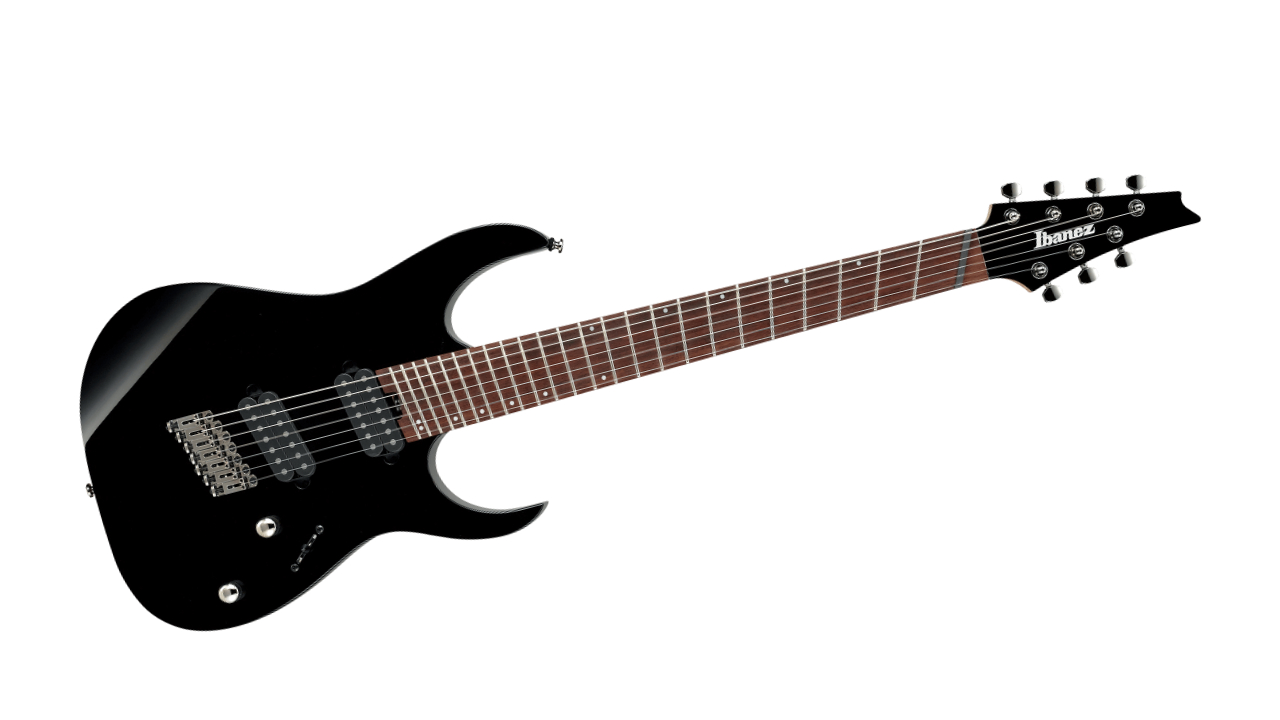
The RG series from Ibanez has been one of the most popular options for metalheads going all the way back to the ‘80s. The classic ‘pointy, but not too pointy’ styling has been inspirational for many throughout the ages, and this RGMS7 is very much an inspirational guitar for the modern age of players.
No, your eyes aren’t playing tricks on you. The RGMS7’s multi-scale design ensures that each string has the perfect tension, allowing for greater note clarity, playing feel and intonation. The fanned frets do take a little getting used to, but with the frets following the natural shape of your fretting hand, the ergonomic plus-sides vastly outweigh the downsides.
Hardware-wise, this Ibanez is well-equipped for a sub £/$500 metal guitar. The Array-7 pickups deliver power, precision and versatility, making the RGMS7 capable of virtually any style you can think of. Combined with the Mono-rail fixed bridge - which isolates each string to allow for greater resonance - Ibanez has created a 7-string monster.
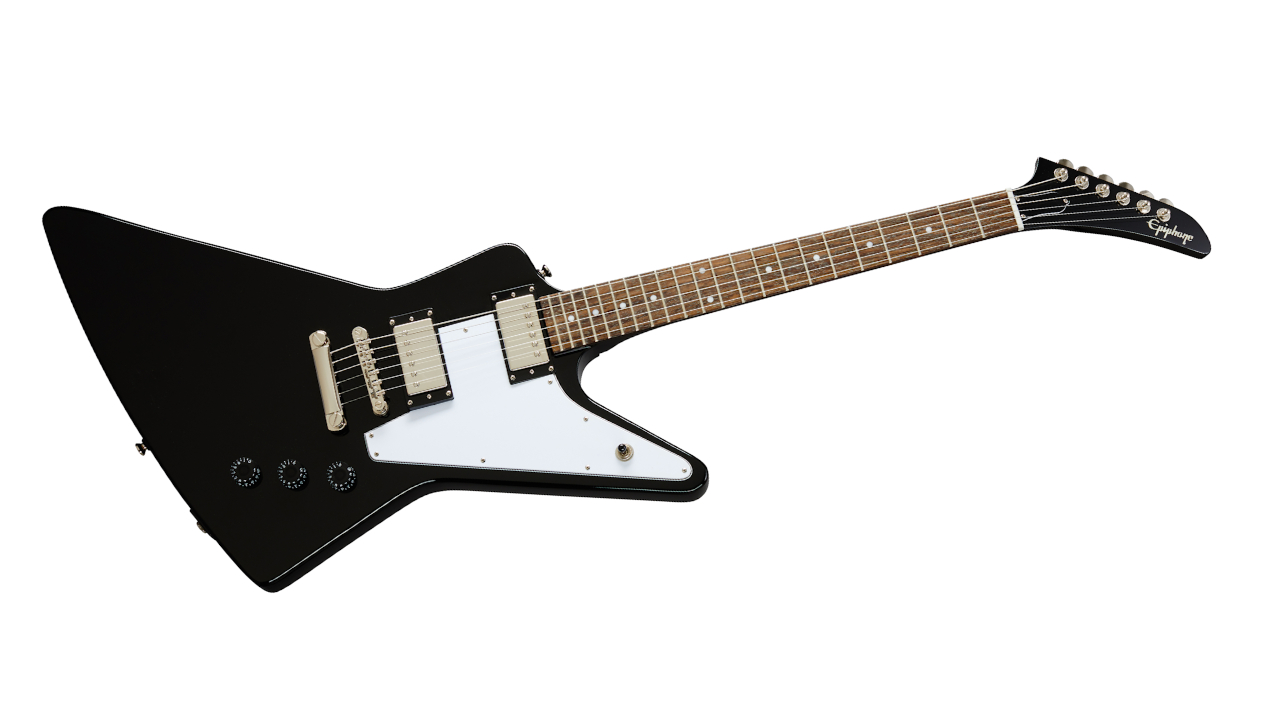
Gibson’s other metal-ready silhouette is available in many guises, but the affordability of the latest Epiphone offering is hard to resist, especially in this suave black finish.
Key to this Explorer’s punishing classic metal tones are Epiphone’s ProBucker humbuckers, which replicate Gibson’s highly sought-after PAF pickups, adding vacuum wax potting to reduce unwanted noise.
Playability is spot-on, too, thanks to a SlimTaper neck profile, combined with top-notch hardware, including a Graph Tech nut, Grover tuners and a LockTone Tune-O-matic bridge and stopbar tailpiece.
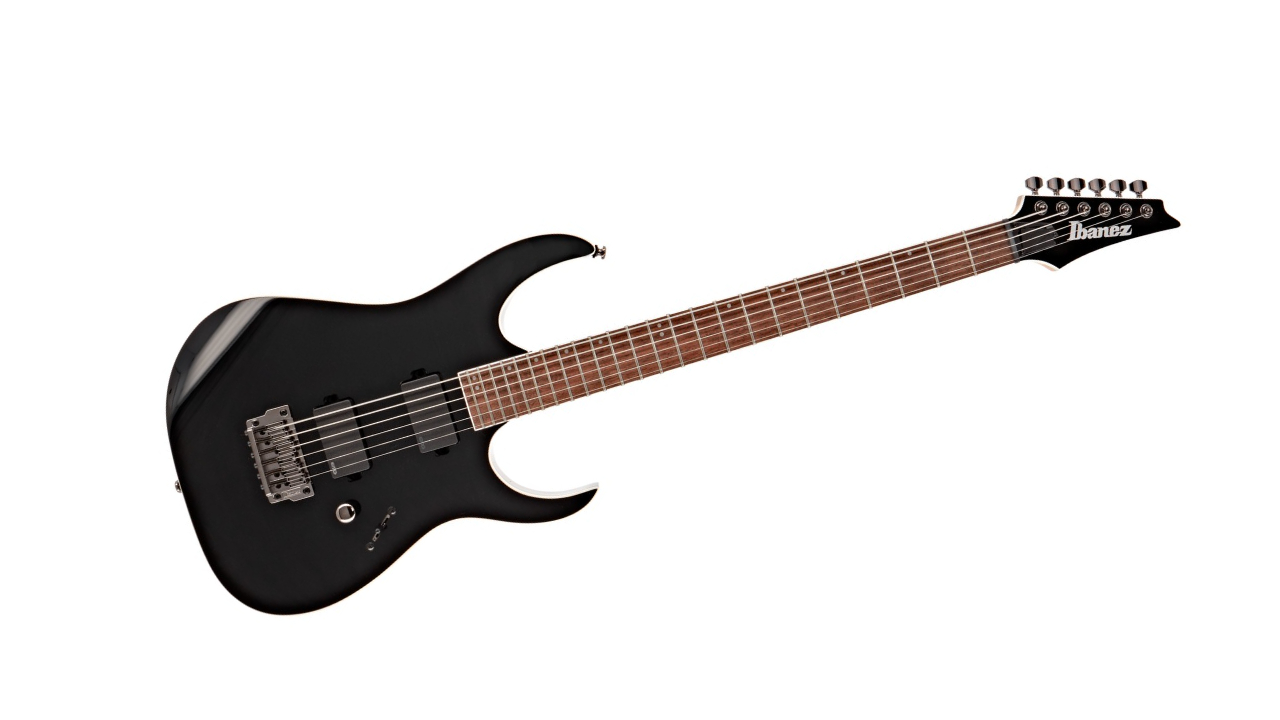
The Iron Label series is Ibanez’s made-for-metal line, and boasts everything a connoisseur of heavy could want. The latest addition is this menacing baritone model - it comes tuned to BEADF♯B, and features a 28” scale length to cope with the extra muscle.
That gives you heavy, low-tuned tones with the playability of a regular guitar - no need to get your head around a seven-string here. Even better, EMG’s 81/60 active humbucker pairing is onboard for high-output thrills, translating that low-end punch with aplomb. Add in Ibanez’s effortlessly playable neck, and the RGIB21 is a winner.
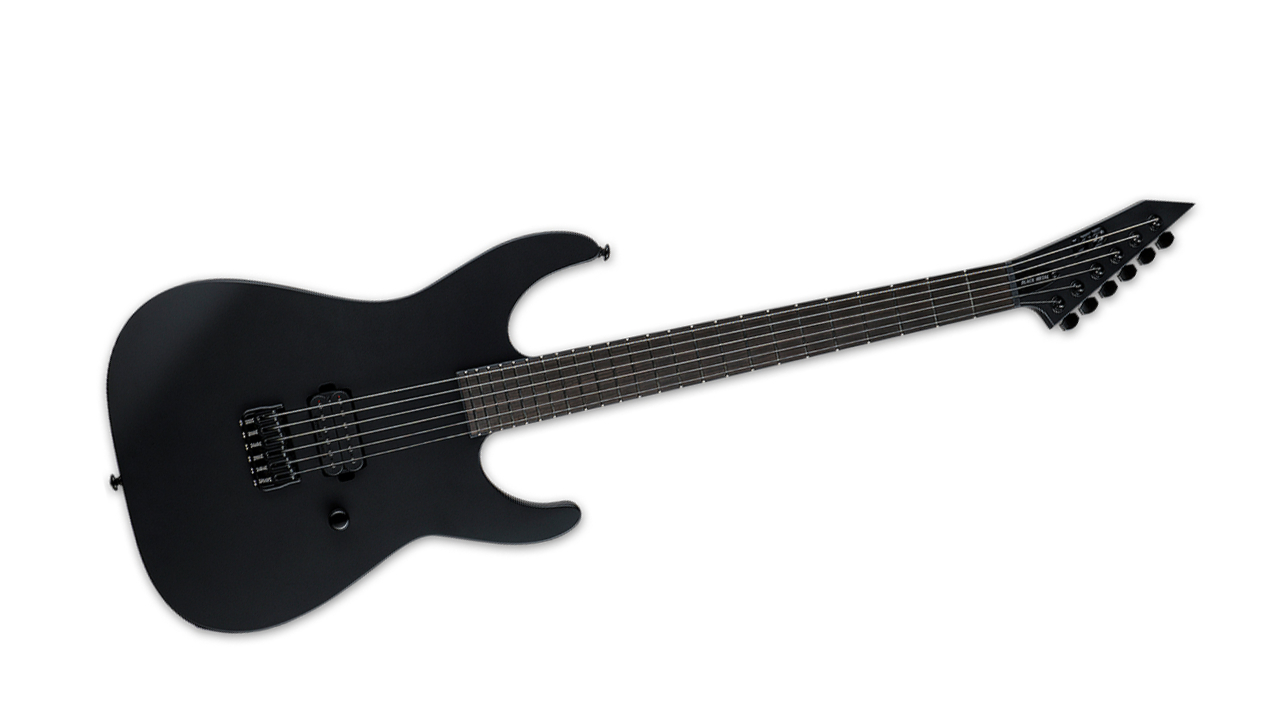
If you like your metal extreme and uncompromising, this none-more-black offering from LTD should scratch that particular itch.
The Black Metal series deals exclusively in heavy tones, courtesy of Seymour Duncan’s ‘Blackened’ Black Winter pickup. There are no other distractions here: just a single volume knob, a Floyd Rose 1000 tremolo for those all-important pterodactyl wails and a terrifyingly playable three-piece maple neck with 24 frets and an Extra Thin U profile.
LTD offers the same pickup and aesthetic configuration across a range of models, too, so you should have no problem finding the right Black Metal guitar for you.
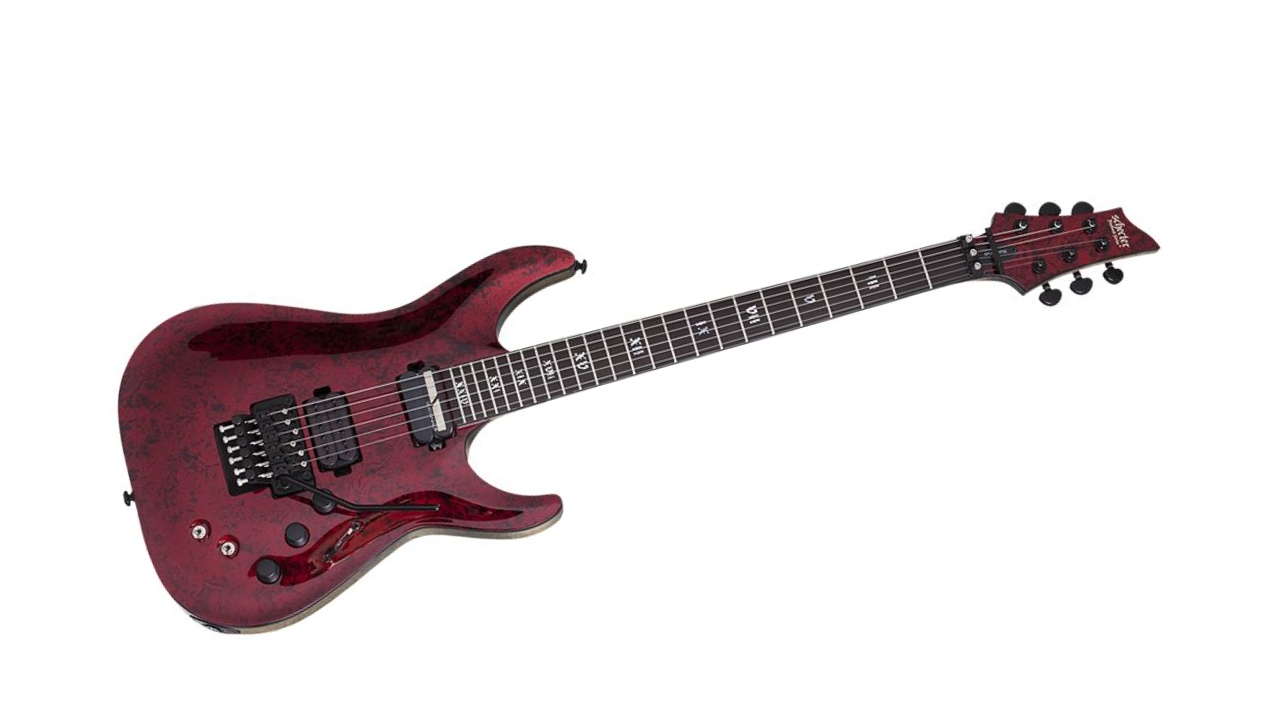
Schecter is known for its colossal range of metal and shred-orientated axes, but does anything scream metal more than the Apocalypse line-up? We don’t think so.
This particular offering is spec’d up to the nines, with big-name hardware from Floyd Rose and Grover, as well as Schecter’s speed-orientated neck, with a 12”-16” compound radius - that means more curvature at the lower end for rhythm work, which flattens out for quicker leads at the dusty end.
Yet this model’s most exciting features lie in its pickups: as well as a Schecter USA Apocalypse-VI bridge humbucker, you get a Sustainiac neck pickup, which gives you access to infinite sustain at the flick of a switch – perfect for those eerie breakdowns.
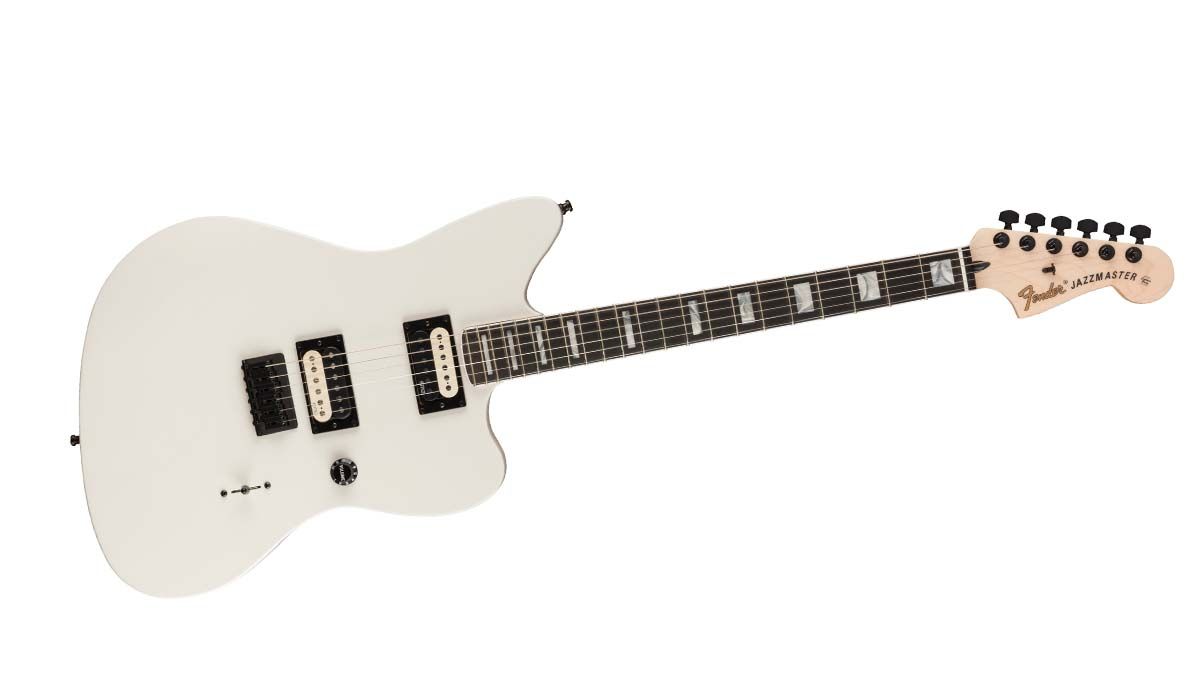
The latest version of the Slipknot riffer’s metal machine doesn’t mess around. It takes Fender’s traditionally alt-rock Jazzmaster body shape, strips out anything unnecessary and includes only what you need to deliver the most devastating tones in modern metal.
A mahogany body offers an increased low-end over Fender’s traditional alder spec, while a flat 12” radius makes for easy playability across the neck. There’s just a single volume knob and hardtail bridge, while Root’s signature EMG Daemonum active humbuckers deliver maximum output and clarity to boot.
For metal players looking to stand out, this Polar White-finished beast more than fits the bill.
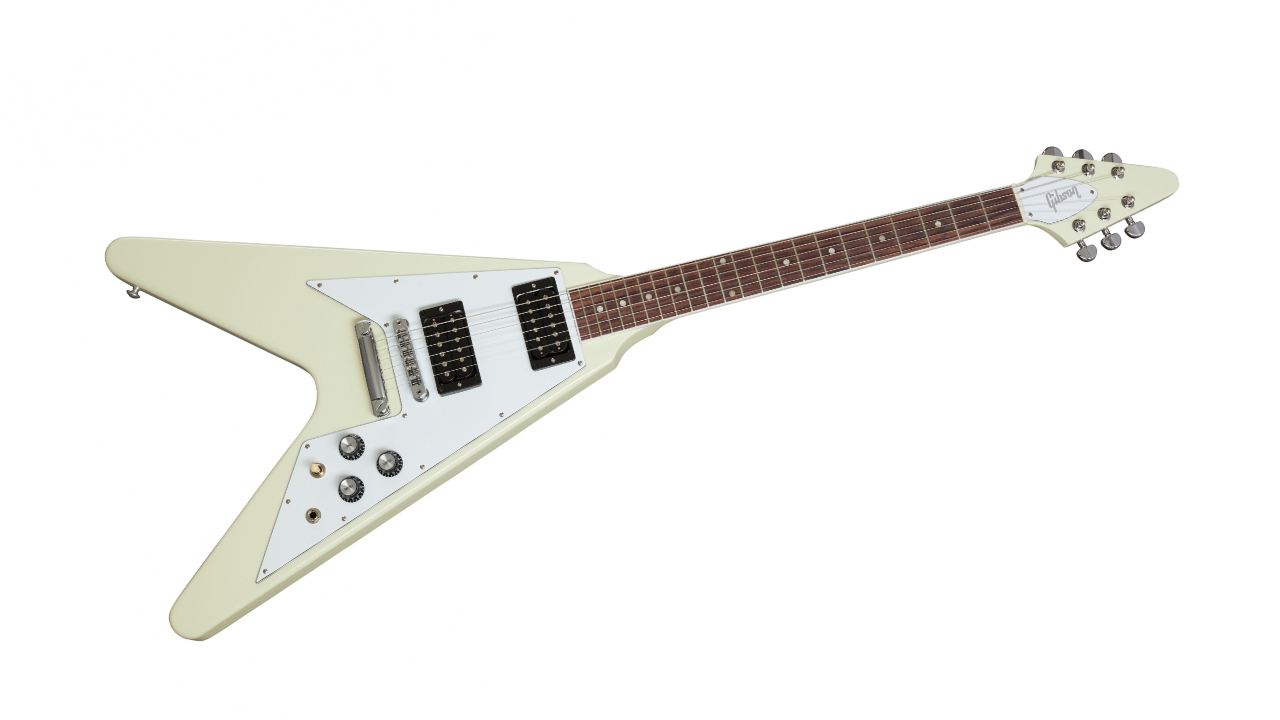
If old-school metal is your bag, guitars don’t come much more iconic than the Flying V – and Gibson’s latest take on the format is true to the form used by some of your favorite OG metallers.
Gibson has kitted this beauty out with a Classic White finish, along with a pair of humbuckers that capture the tone of the V’s hard-rocking ’70s era. Add in the Slim Taper neck profile and bound rosewood fretboard, and it’s a cinch to speed up and down this one.
Okay, it’s still not the easier guitar to play sitting down, but given the V is practically the guitar equivalent of the ‘horns’ hand gesture, it doesn’t get more metal than this.
Best metal guitars: Buying advice
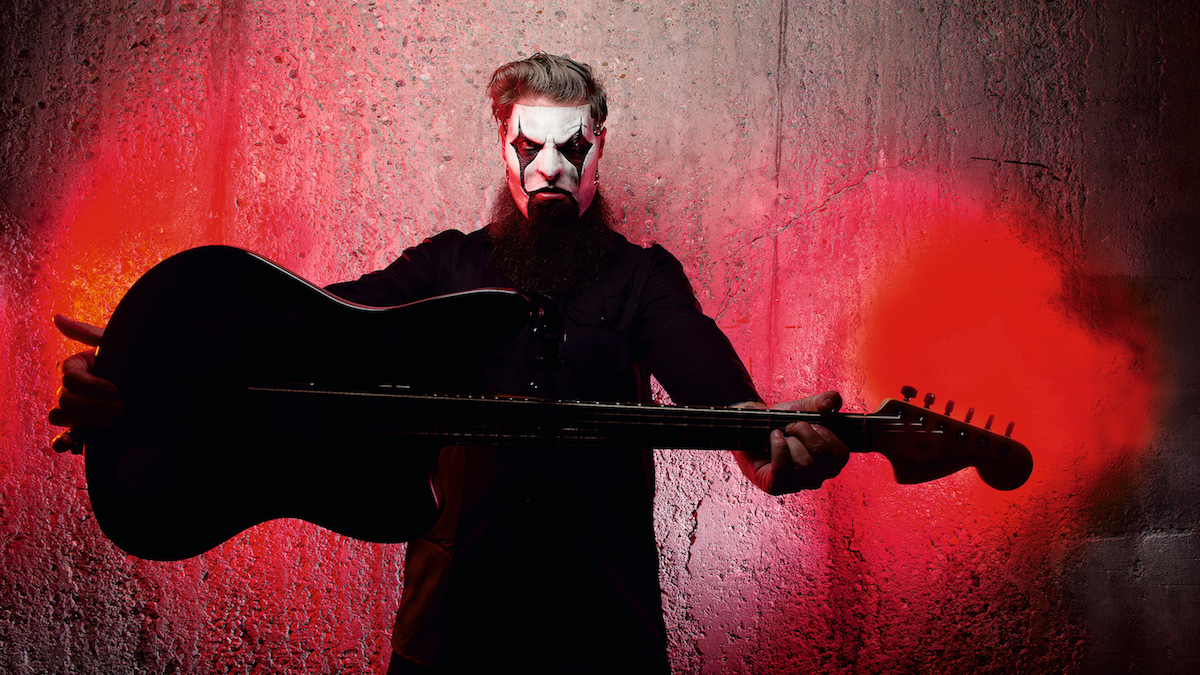
The sound of metal is predicated on gain... and lots of it. Of course, a lot of this is down to the amp, but getting the right spec for your guitar is crucial. To that end, you want to be looking at a guitar with a bridge humbucker, preferably one that delivers a high output to send an amp into a frenzy of distortion.
Traditional metal guitar designs tend to employ lower-output humbuckers, which work great for more retro tones, but not so much for today’s precision-engineered tech-metal genres. The very highest-output pickups are often active designs, which utilise built-in preamps to deliver the highest signal with the utmost clarity.
The best metal guitars tend to feature slim necks with flatter radii. This basically means the curvature of the neck is flat across the board, making for easier solos at the top of the fretboard. If you’re playing thrash or more technical styles, speed is the name of the game, so you don’t want a guitar that you have to fight to get the best results. It’s important that a neck is comfortable while playing extreme riffs and leads to avoid hand fatigue, too.
Then, of course, there are extended-range guitars – 7-strings and 8-strings. These types of guitars are the gatekeepers to metal’s most guttural tones, and the bedrock upon which djent was built. If that’s the kind of music that floats your progressive boat, you’ll need to target these kinds of guitars, which have an additional learning curve if you’re used to a regular ol’ six-string.
For this reason, baritone guitars have seen a surge in popularity in recent years: they’re tuned B to B as opposed to a regular guitar’s E to E tuning, but without the hassle of reprogramming your brain to accommodate that extra seventh string.
Related guides
You can trust Louder Our experienced team has worked for some of the biggest brands in music. From testing headphones to reviewing albums, our experts aim to create reviews you can trust. Find out more about how we review.
- The best rock guitars: Embrace your inner Slash
- Plug your lugs with the best earplugs for concerts
